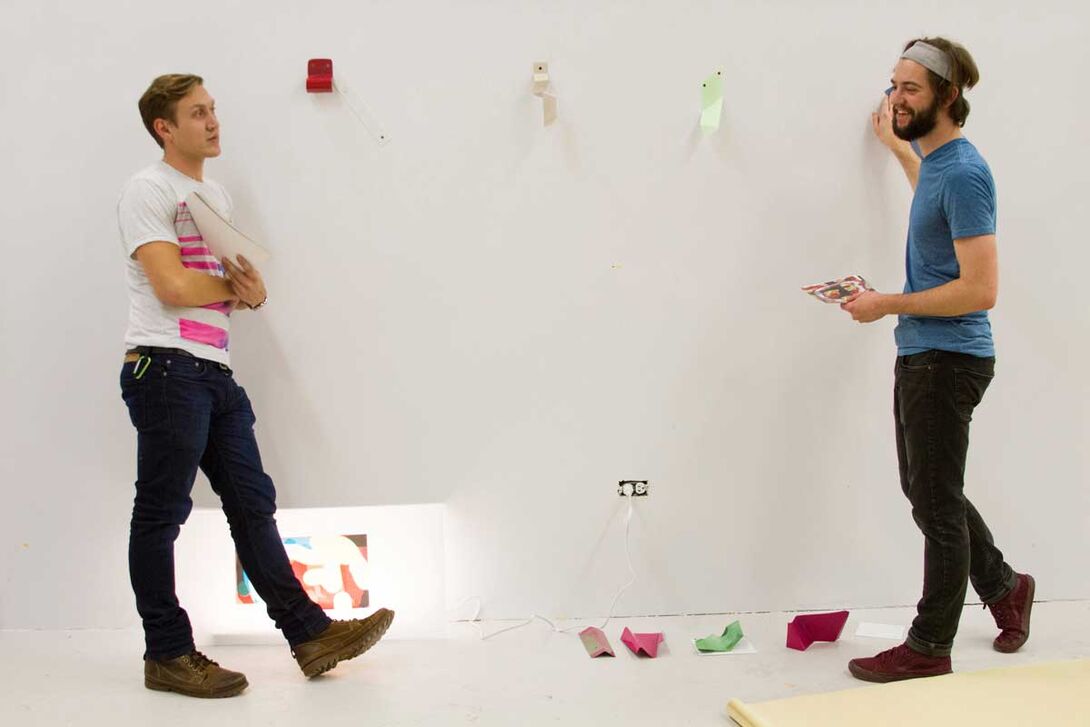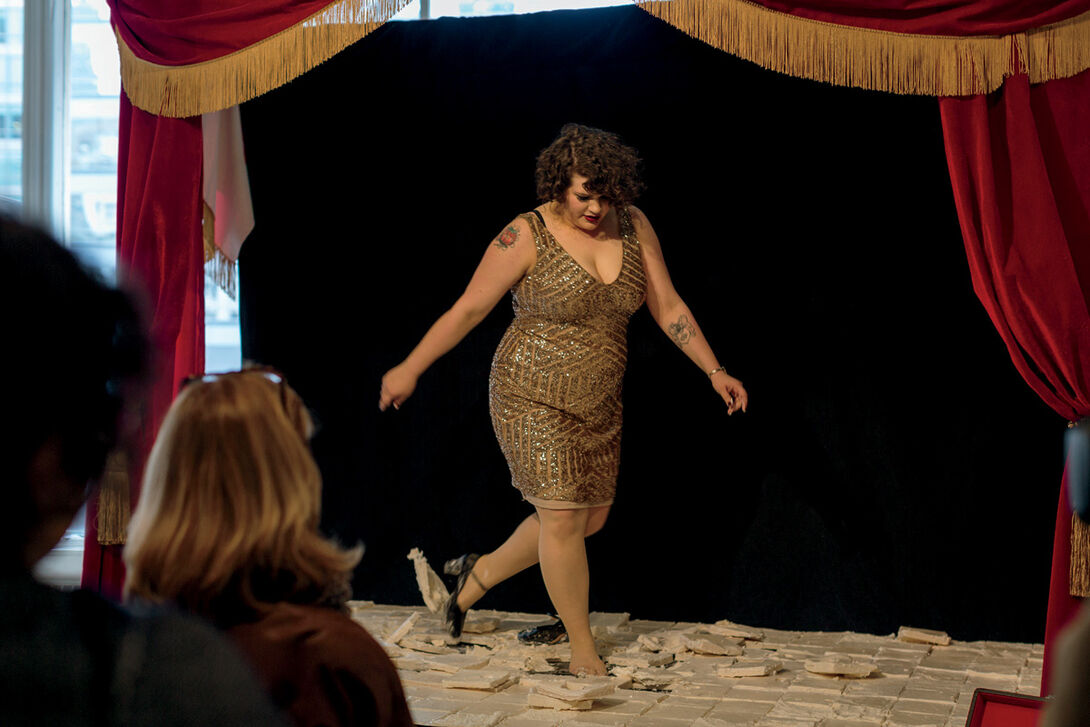
Behind the Scenes
Each year graduate students work together with artists to create a meaningful final thesis exhibition.

by Micco Caporale (MA 2018)
The spring 2017 MFA Show will mark the sixth year that SAIC’s final thesis exhibition featuring more than 100 artists was shaped by an invested collaboration between artists and curators. Each year three leading curators from across the United States join 12 graduate curatorial fellows to engage in an uncommon curatorial process overseen by SAIC Director of Exhibitions Kate Zeller. The goal of this unique learning opportunity is both to develop an engaging exhibition and to aid in the realization of the new works that will be exhibited. Yet this show also generates professional opportunities and networks for participating students.
In the fall, the curatorial fellows begin a yearlong course on curation through SAIC’s Institute for Curatorial Research and Practice. They also begin meeting with MFA Show artists one-on-one and learn about each other’s practices. At the core of this exchange is a unique brand of curating: dialogue.
In the contemporary art world, where exhibitions more often than not present opportunities to make and not just show new work, curators and artists become partners in the process. SAIC is in a unique position to teach that skill, given its thriving population of emerging artists, and the MFA Show mines the depth of this pedagogical lesson.

“Exhibition making is an exercise in trust,” says Ann Meisinger (Dual MA 2014), Assistant Curator of Public Programs at the Museum of Contemporary Art Chicago (MCA). Cultivating professional skills through experiential learning and developing working relationships over the course of the academic year are essential to this embodied process that extends beyond the students’ time at SAIC and continues as they take careers. “Many of the collaborations in both my current work at the MCA and independent curatorial practice are a direct result of the trust I established working with artists on the MFA Show,” says Meisinger.
Now Curatorial Assistant at the Indianapolis Museum of Art, Elisabeth Smith (Dual MA 2015), finds that the MFA Show process was “an incredibly formative experience that instilled in me fundamental curatorial values that have become a necessary foundation for my work at the museum: intention, flexibility, collaboration, and trust.” Moreover, engaging with artists outside of the classroom helped Frances Dorenbaum (MA 2016) “better understand how the making process works and the innumerable ways one can communicate about art objects,” while also feeling more connected to the School community overall.
Many of these professional relationships continue well beyond the MFA Show. For Jeannette L. Tremblay (MA 2011), now Director of School and Studio Programs at Hyde Park Art Center, working on the MFA Show was not only one of her most valuable experiences at SAIC in terms of practical training in curating a large-scale exhibition, but also allowed her to develop strong networks of artists and curators, many of whom she still works with—including her guest curator, Gregory Harris, who remains a professional colleague and mentor. “It would be difficult to overstate just how much my experience affected my opportunities and professional growth, but one thing is for sure, it has given me a more nuanced understanding of the needs of artists, allowing me to develop new and unusual educational opportunities to better support their growth in my current role.” Likewise for J. Gibran Villalobos (Dual MA 2013), Cultural Liaison for the City of Chicago, who says the experience also “put me in direct contact with an artistic network that has become fundamental in my current positions with the Department of Culture, Arts, and Nature with the Chicago Park District and at the National Association for Latino Arts and Cultures. Developing the MFA Show was crucial for me in sharpening strategies that are at play in the ecology of cultural production.”

Current Graduate Curatorial Fellow Jared Packard (MFA 2017), sees yet another benefit to his role: the power to shape the experience of the audience. “Artists have certain perspectives that a lot of people don’t consider,” he says. “Art gives those ideas a physical form for people outside the art world to engage content in a way that’s different from, say, reading about it or being preached to. Art allows people to arrive at conclusions on their own, which can be a lot more meaningful because it’s organic.”
Packard’s class of curatorial fellows is working with Guest Curators Daniel Fuller, Curator at the Atlanta Contemporary Art Center; Valerie Cassell Oliver, Senior Curator at the Contemporary Arts Museum Houston; and Julie Rodrigues Widholm (MA 1999), Director and Chief Curator of DePaul Art Museum to bring the next iteration of the exhibition to the public.
“As future curators, we strive to support and not administer artists,” says current Curatorial Fellow Pia Singh (MA 2017). “No one can learn how to be supportive unless they cultivate a degree of empathy that pushes both the artist’s and curator’s vision forward, together.”
You can see the power of these collaborations and meet the artists and curators at the opening reception of the 2017 MFA Show in SAIC’s Sullivan Galleries on Friday, April 28.
